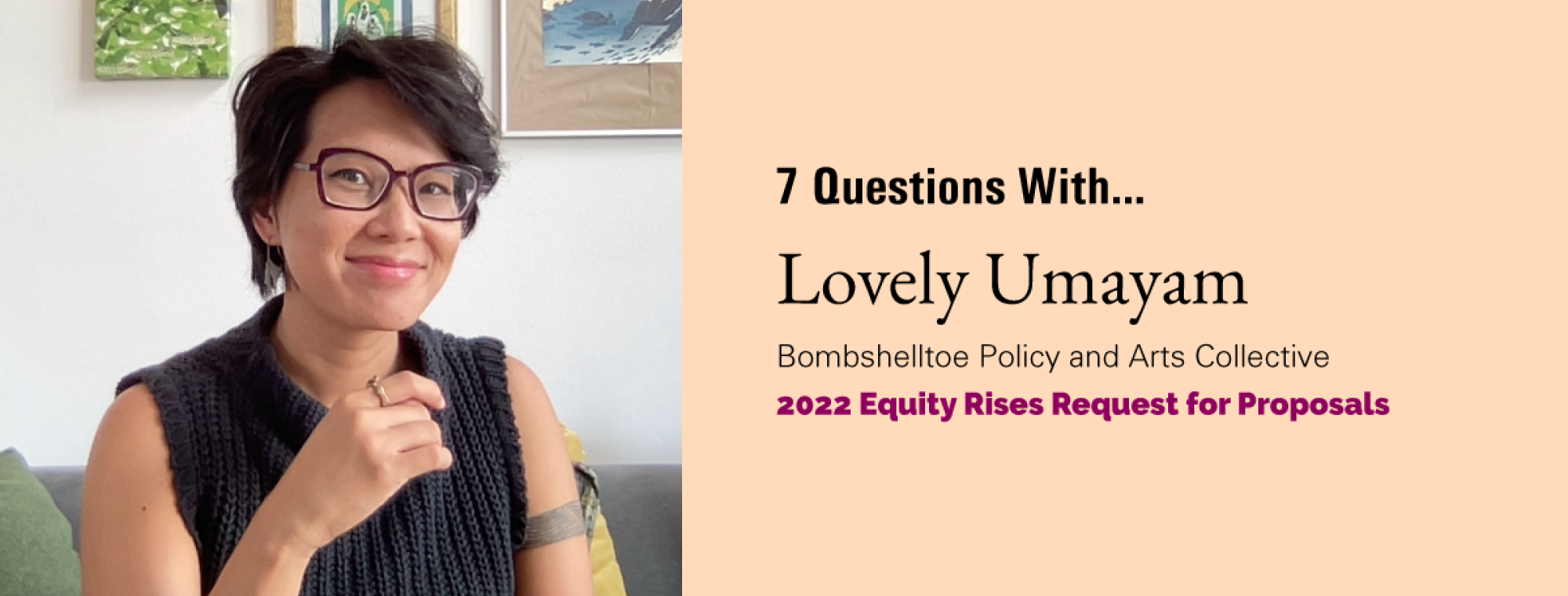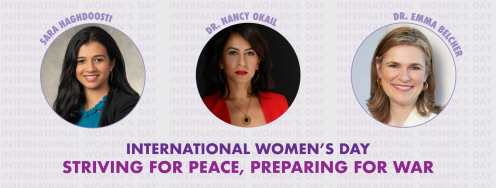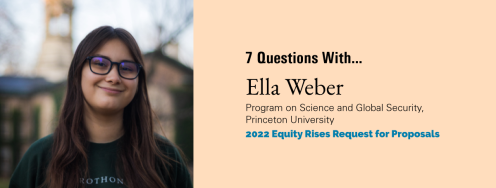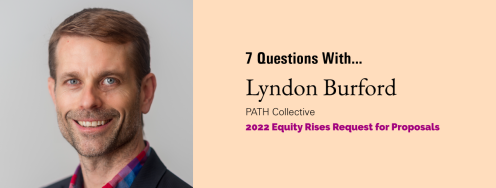Lovely Umayam is a writer and a nuclear nonproliferation expert. She is the founder of the Bombshelltoe Policy and Arts Collective, a creative organization pushing for an active exploration of arts, culture and history to promote nuclear nonproliferation, arms control and disarmament. This is part of a series of interviews in which you can get to know the grants given under the 2022 Equity Rises Request for Proposals and the people behind all the work.
Question 1: Tell us about your work! What kind of goals do you have? What are you excited about?
I am the founder and lead producer at Bombshelltoe Policy x Arts Collective, which is a space for nuclear policy experts, scientists, artists, and activists to come together and create written or visual stories about our complex nuclear world! Bombshelltoe projects attempt to find new intellectual and emotional entry-points to nuclear issues, so the work always feels fresh and exciting.
Question 2: Nuclear weapons isn’t exactly associated with creativity or art. How did you come to see the connection between the two?
The connection has always been natural for me! Nuclear issues—may it be for military or peaceful purposes—is associated with all kinds of narratives and imagery, both good and bad. The novel The World Set Free (published in 1914, thirty years before the advent of nuclear weapons!), written by HG Wells, is one of the first to describe the consequences of war because of a weapon that unleashed an uncontrollable amount of atomic energy. Since then, other images have emerged: three-eyed fish, mushroom clouds, mad scientists…the list goes on! We cannot decouple public understanding of the word “nuclear” from these images, which often come from works of art. I think what has happened overtime is that we’ve separated the two, believing that creativity is not as rigorous or important as policy-making. Bombshelltoe is about insisting that creativity and nuclear security have always had equal footing and enjoy a symbiotic relationship.
Question 3: In addition to being a part of Ploughshares Fund’s Equity Rises Initiative, you’re also a Gender Champion. How do you think including more diverse voices will affect the nuclear field?
Embracing diverse voices—may that be gender, ethnicity, religion, or lived experiences—will naturally make the field more dynamic, nuanced, and empathic. All of us cannot help but bring pieces of ourselves to our work and shape its trajectory. Nuclear policy research, and more broadly the frameworks that underpin our understanding of international relations, have historically focused on certain units of analyses and perspectives because of who has been allowed to contribute and be at the table (historically white, male, able-bodied and works in Washington, DC). It's exciting to imagine the field looking and feeling different as we bring in new talent who see the world differently based on their identities and experiences.
Question 4: What's one of the most interesting or memorable projects you've gotten involved with in your career?
The Color Curtain Project, which examines colonialism, nuclear disarmament, and Afro-Asian solidarity, is one of my favorites! It is an experimental project that invites experts from different fields of expertise to reflect on a historical moment– the 1955 Bandung Conference, which gave way to the Non-Aligned Movement– via a series of essays and dinner series. I had the chance to work with chefs, museum curators, artists, local business owners, and other talented people and discuss what the promise and pitfalls of Bandung meant to the Asian and African diaspora. It was also a unique way for me to talk about nuclear issues from a deeply personal level. (one-on-one conversations while breaking bread!) The Color Curtain Project began in Washington, DC in 2018, which we had to pivot due to the Covid-19 pandemic (in 2020, we created a quarantine version via an artbook with a built-in dinner for two; here’s a review of that book), and we are now exploring opportunities to bring it internationally now that it is feeling safe again to gather people together!
Question 5: What’s the one thing about the nuclear policy field you wish people knew or would talk about more often?
Honestly – that the nuclear policy field exists in the first place! Whenever I meet people outside of the field, they are always surprised to hear that I work on nuclear policy, as though it hadn’t occurred to them that something like that exists. They always ask me how I got into it, and sometimes they openly say they wish they knew this was a viable career path. There’s a lot of mythmaking and gatekeeping in the field that renders it inaccessible to the common citizen.
Question 6: What do you think the nuclear policy field needs right now?
A cross-pollination of policy ideas and public messaging with the environmental security field. There are a lot of overlapping ideas but remain unexamined because the two fields don’t have an established channel to discuss common interests. This is what the project Atomic Terrain aims to create!
Question 7: What’s inspiring you currently?
I’m a first-time young mom, so my 4 month-old baby is inspiring me right now! While parenting is difficult, it’s also given me new energy to continue my Bombshelltoe projects, since they are all about forging new path towards a more secure and safer world without the threat of nuclear weapons. Having a child and imaging a bright future for them makes this work even more urgent. I also want to set an example of what it looks like to fully embrace my identity as a creative, nuclear expert, and mother. These different aspects of who I am bring strength to the work I do.




